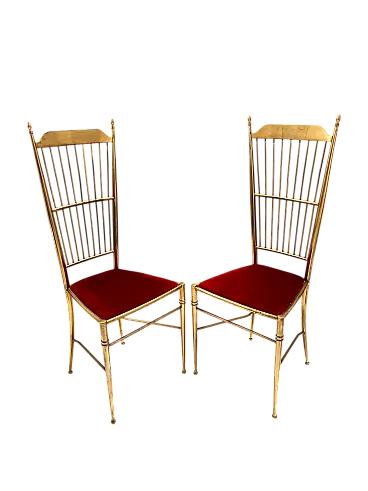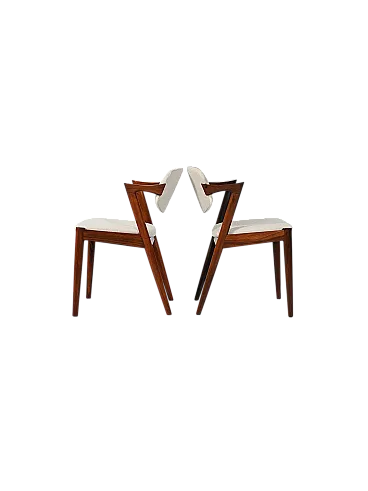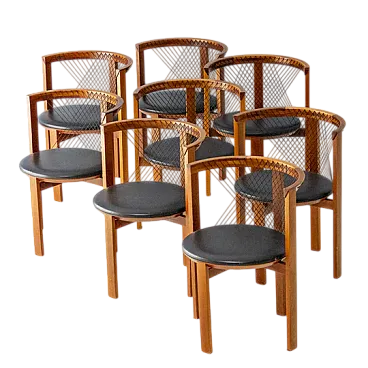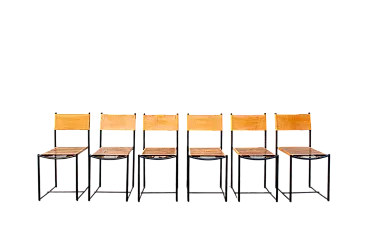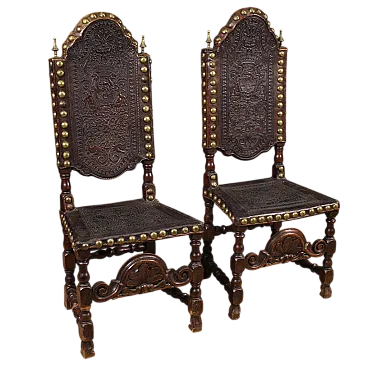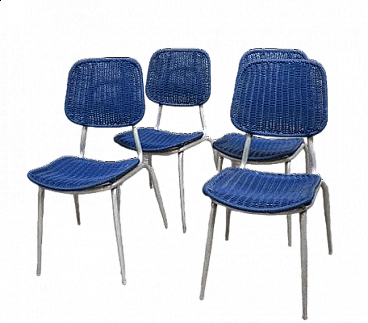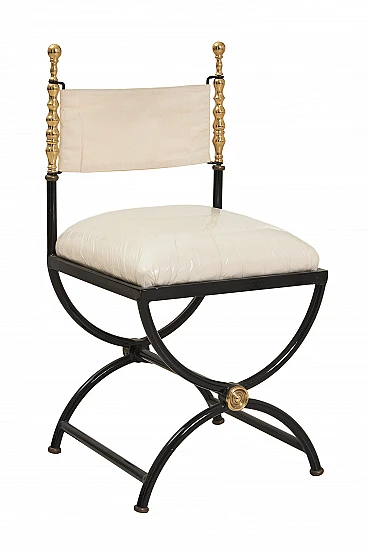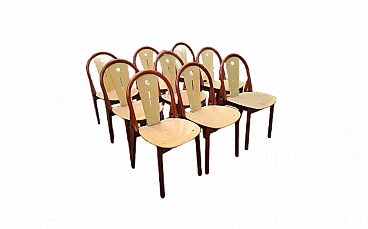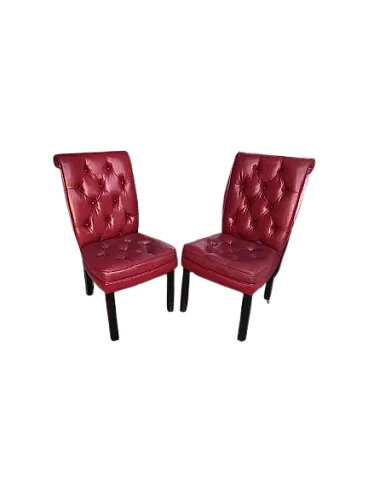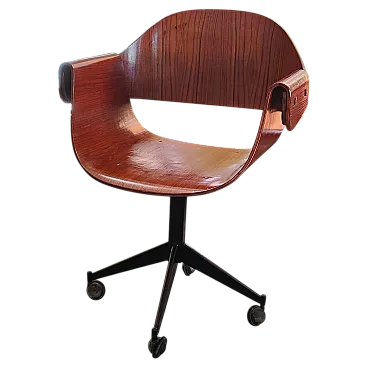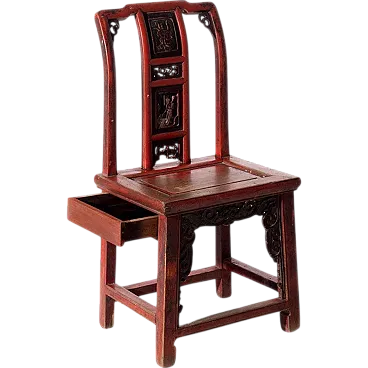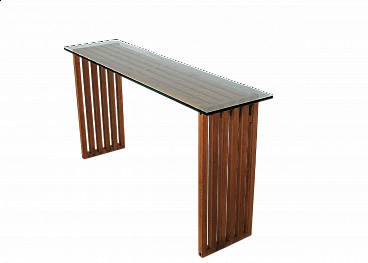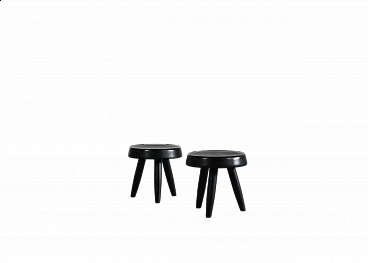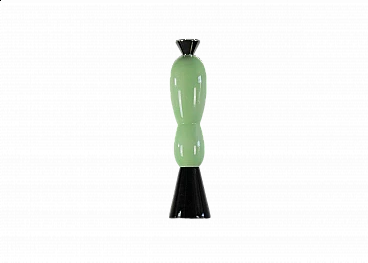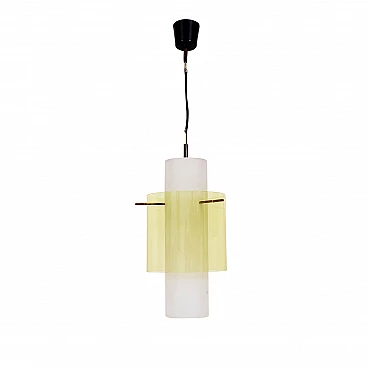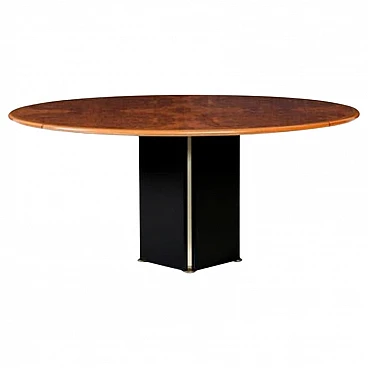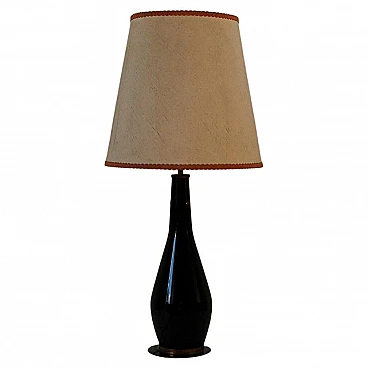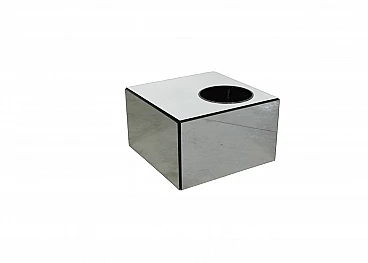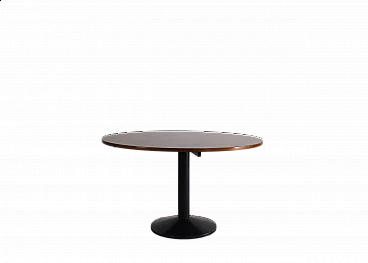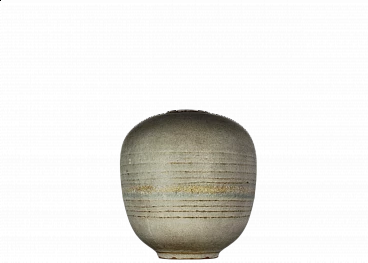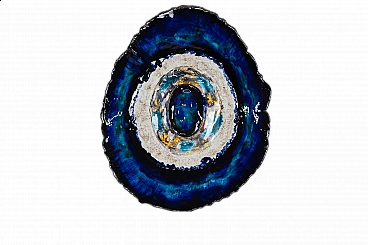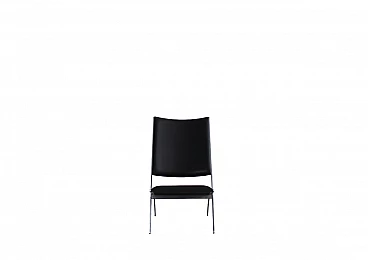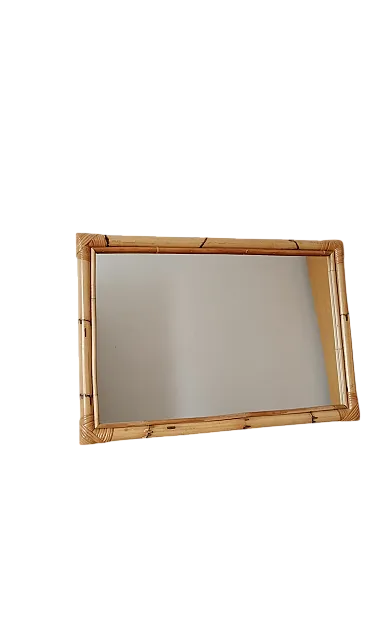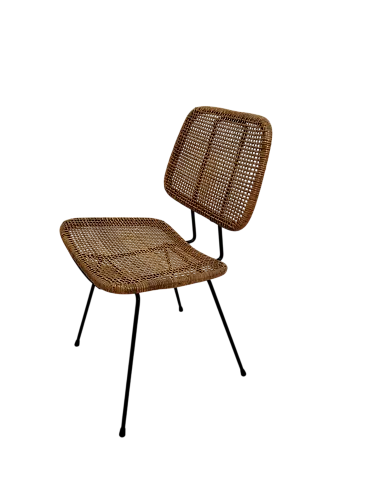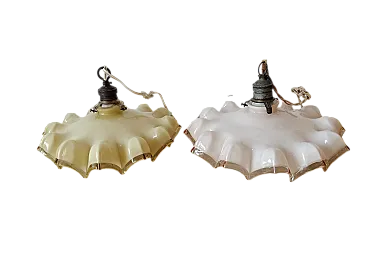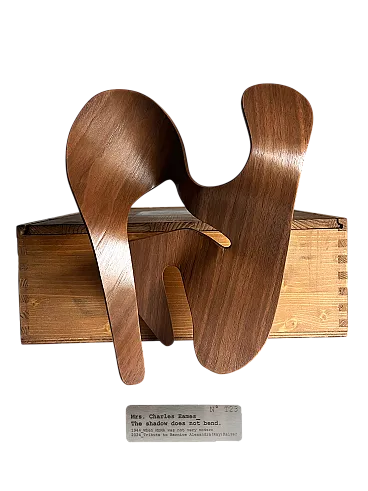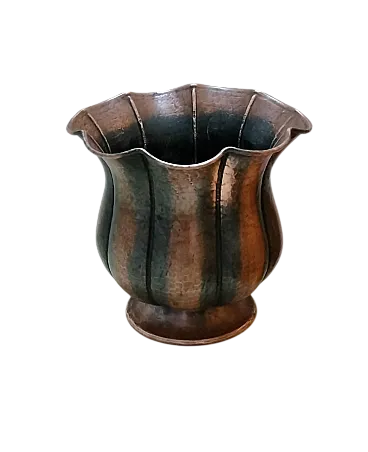Six dining chairs with curved veneered plywood backs and seats and black lacquered metal legs, designed by Carlo Ratti and produced by Industria Legni Curvati (Lissone, Italy) in the 1950s. In Italy, at the beginning of the 20th century, curved solid wood industries sprang up under licence from Michael Thonet, and through the International Expos, curved woodworking became increasingly popular. The Expo of the first decade was also attended by the Monza wood manufacturers, while in 1905 Otto Helzer in Switzerland patented laminated bentwood structures, the strength of which was equivalent to those made of steel. The Ratti brothers from Monza took their cue from solid lamellar wood to create furniture that used sheets of wood instead of wooden elements. The Ratti brothers, Carlo and Mario, also began to follow the young artistic avant-gardes (Cubism, Futurism and Abstractionism).
Their mastery of wooden sculpture influenced Carlo to design and produce furniture of refined neo-plastic and deco artistic workmanship, receiving honours from the Prince of Piedmont Umberto di Savoia.
In 1919, the first Lombardy Exhibition of Decorative Arts (later to become the Triennale) was held in Milan and the Ratti brothers exhibited their furniture in solid wood but also in curved panel with a new curving system, the Canvas system.
The cloth system was developed by the Ratti brothers with the help of a friend, Cesare Cantù.
They developed an elastomer bag into which they inserted the mould with the panel to be bent and, closing it with clamps, removed the air inside, thus making the panel adhere to the mould. Carlo and Mario found in the Telo system a means of producing objects and furniture in the three spatial directions with large surface curvatures, no limits to thickness and minimum radii of curvature.
In 1921 the first Furniture Exhibition was inaugurated in Stuttgart and Fratelli Ratti of Monza made an international name for itself by presenting furniture in solid wood and also furniture in load-bearing plywood, alongside furniture with interchangeable, framed upholstery.
Expos became meeting places for testing and presenting new developments in the furniture and industrialisation sectors and, with the development of Industrial Design, the first architects joined the furniture industries.
At various international and national exhibitions, Fratelli Ratti also presented objects that were incredible in their manufacture using the Telo system.
After 1930, Carlo and Mario produced many containers for radios and folding chairs for the cinema, but in 1939 they split up and Mario remained in Monza who, with his sons Antonio and Angela, formed the Curved Compensation Company.
Carlo moved to Lissone, forming the Industria Legni Curvati with his children Angelo and Piera and her husband, Piero Berruti. After the war, a new bending system, the Mould and Counter Mould, was added to the existing systems from the 1950s.
After the war, architects devoted themselves exclusively to design and reconstruction and the need to win back markets put the industrialists in a position to offer quality products, designed by architects-designers of the new generation. Both Carlo Ratti's and Mario's company began to collaborate with world-famous architects such as Ignazio Gardella, Paolo Chessa, Vico Magistretti, the Castiglioni brothers, Vittoriano Vigano, Marco Zanuso, Carlo de Carli, etc.
In those years, many technological objects with bent plywood shells such as washing machines, televisions, radios, sewing machines, etc. were produced, while the production of furniture in the rationalist style continued. The new bending technologies, Mould and Counter Mould and High Frequency, allowed a remarkable mass production and, while the old Telo system continued to exist to make extraordinary objects with Coons curves, especially High Frequency spread all over the world.
The Japanese company Tendo Mokko invented this new bending system in 1948, trying to make plywood tops and, immediately, the Ratti company in Monza used it, while the company in Lissone continued to make products with the old Mould and Counter-mould system.
This system used aluminium moulds as opposed to other systems that made wooden moulds instead, with considerable cost savings.
In 1954, a chair designed by Carlo de Carli for Cassina and made by Carlo Ratti won the 'Compasso d'Oro' award as an object of outstanding technical and aesthetic value.
In 1961 Carlo Ratti died and his children Angelo and Piera, with their husband Piero Berruti, continued the business while the third generation joined the company.
The company was transformed from Industria Legni Curvati into Carlo Ratti s.a.s and, from then on, new collaborations with young architects enabled a new technological development.
Thus, the high-frequency system is introduced in the company, but the mould and countermould system is not abandoned and, above all, the Telo system, which is still used for the production of samples and prototypes.
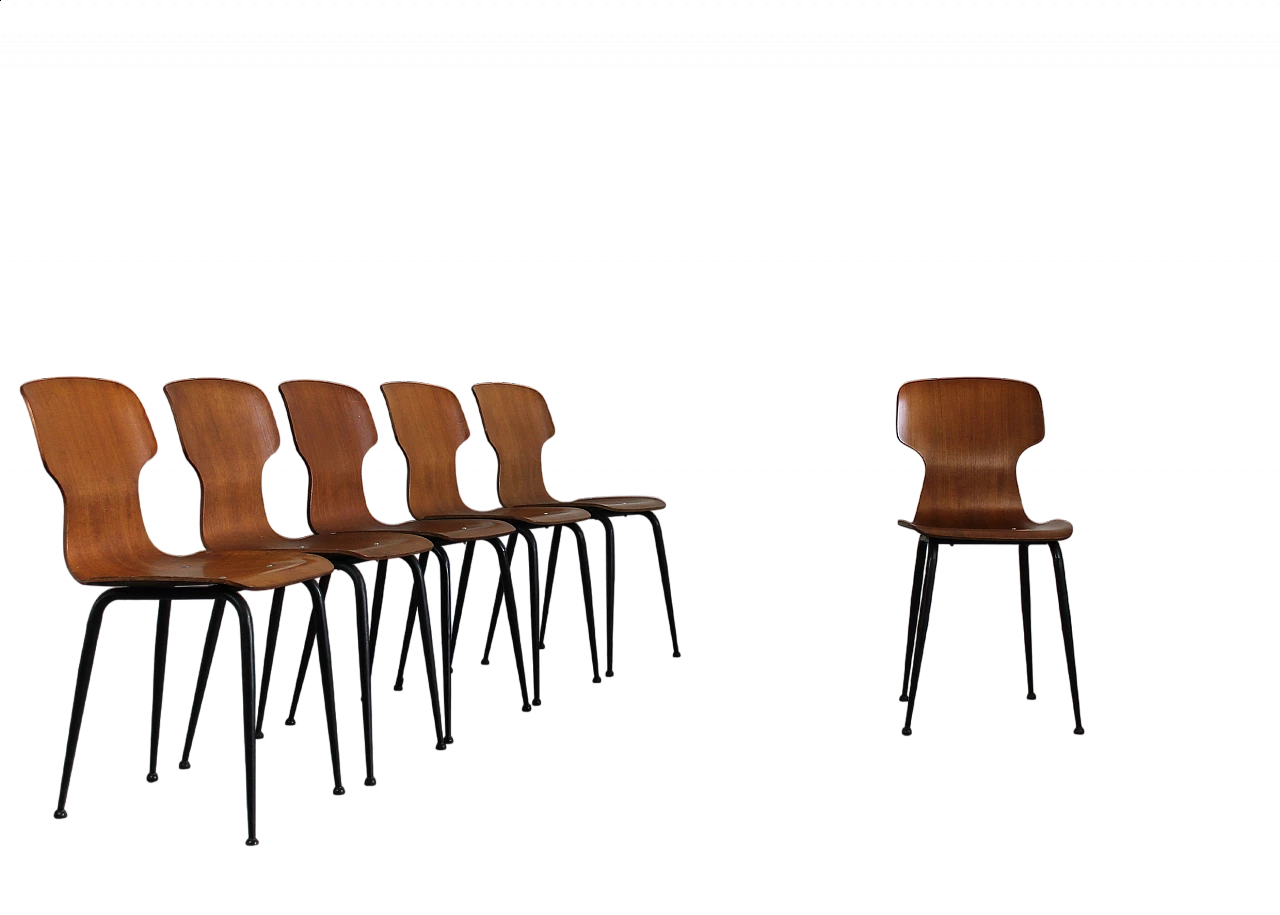
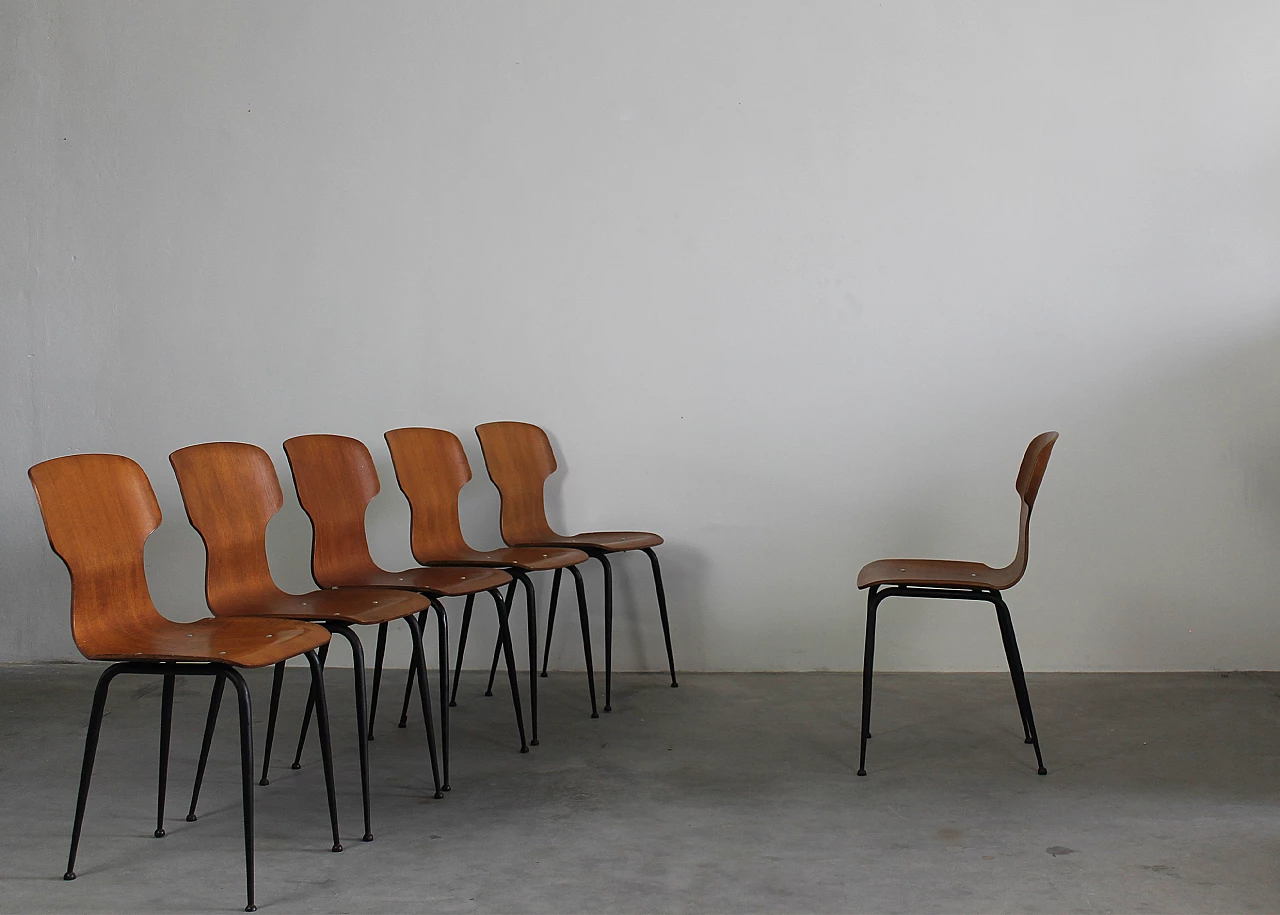
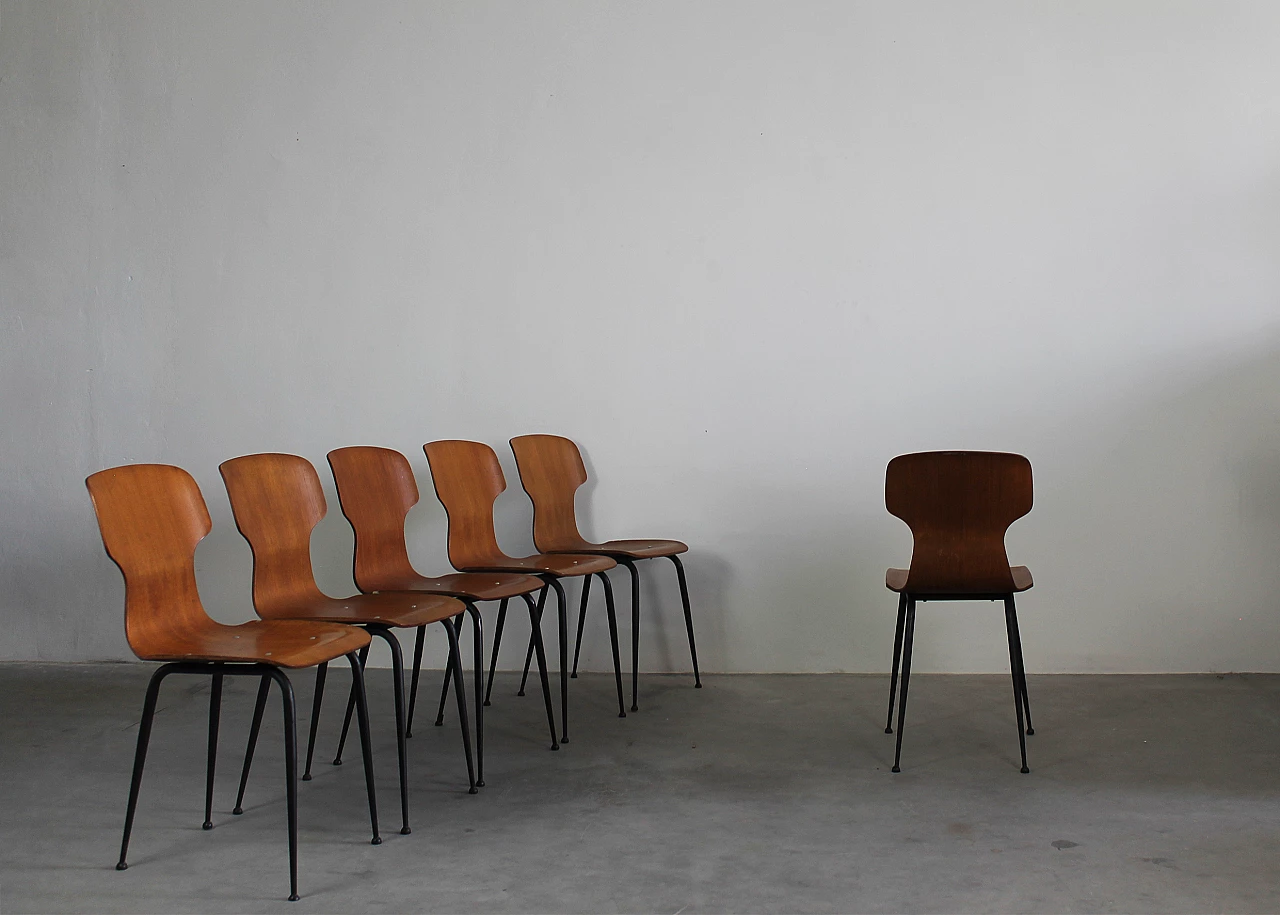
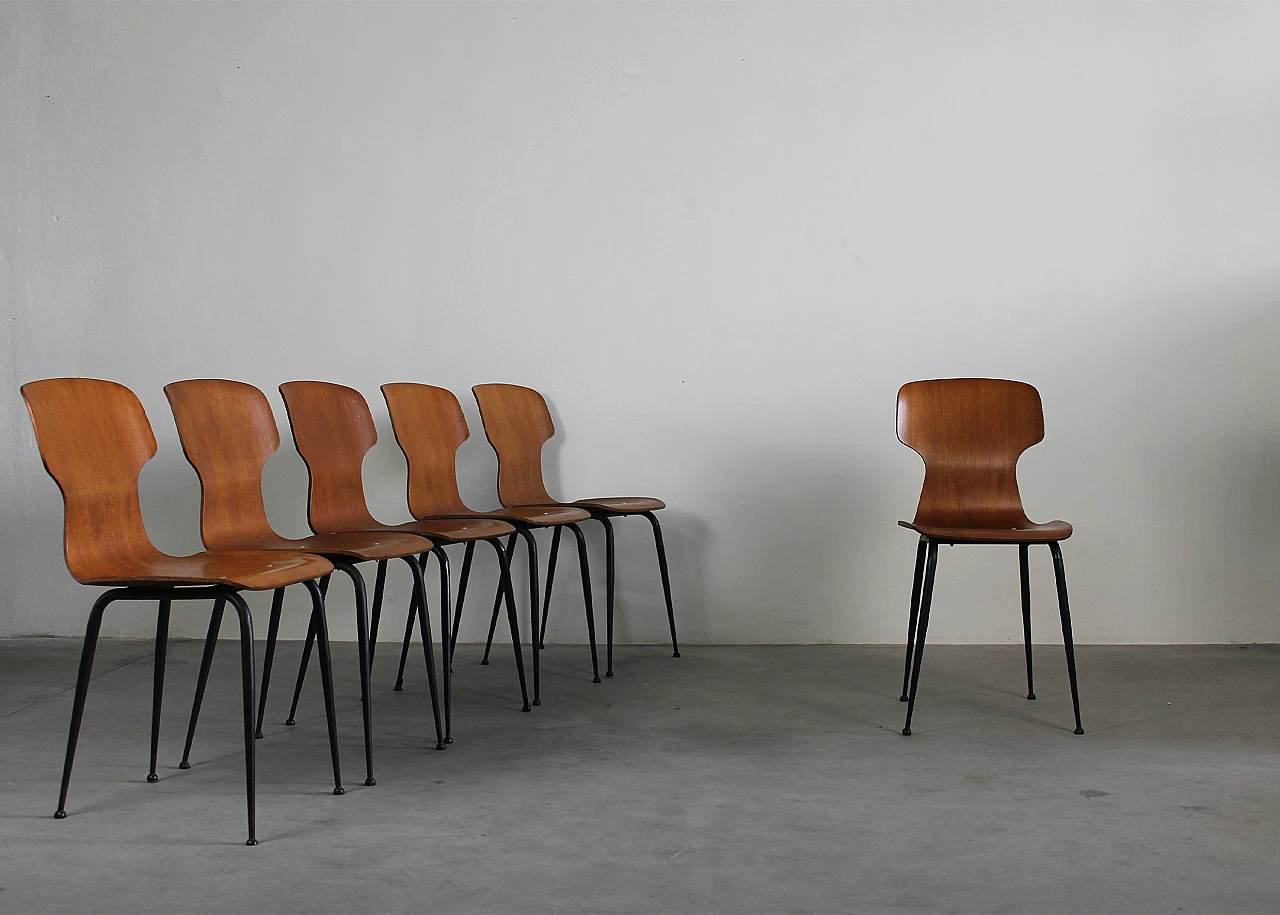
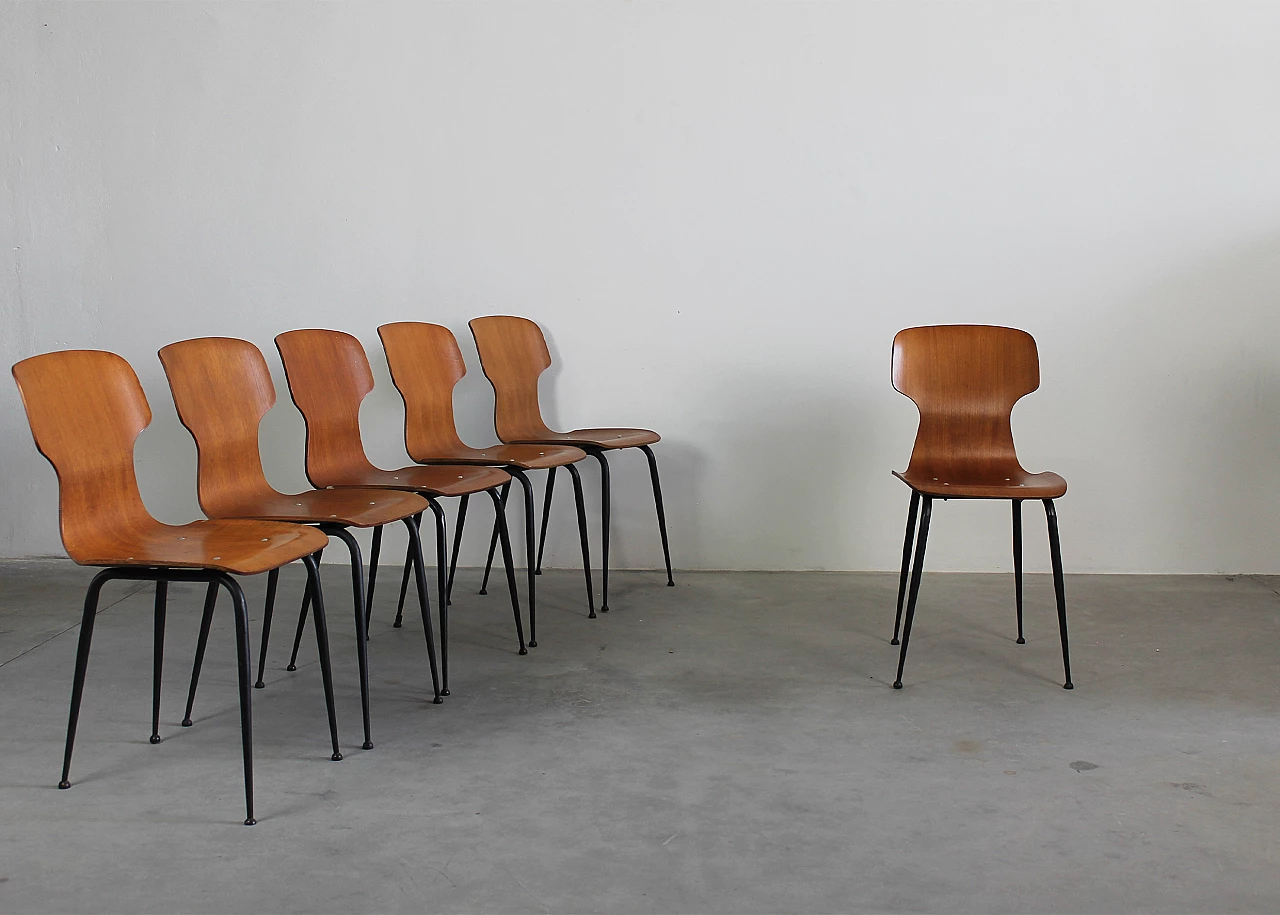
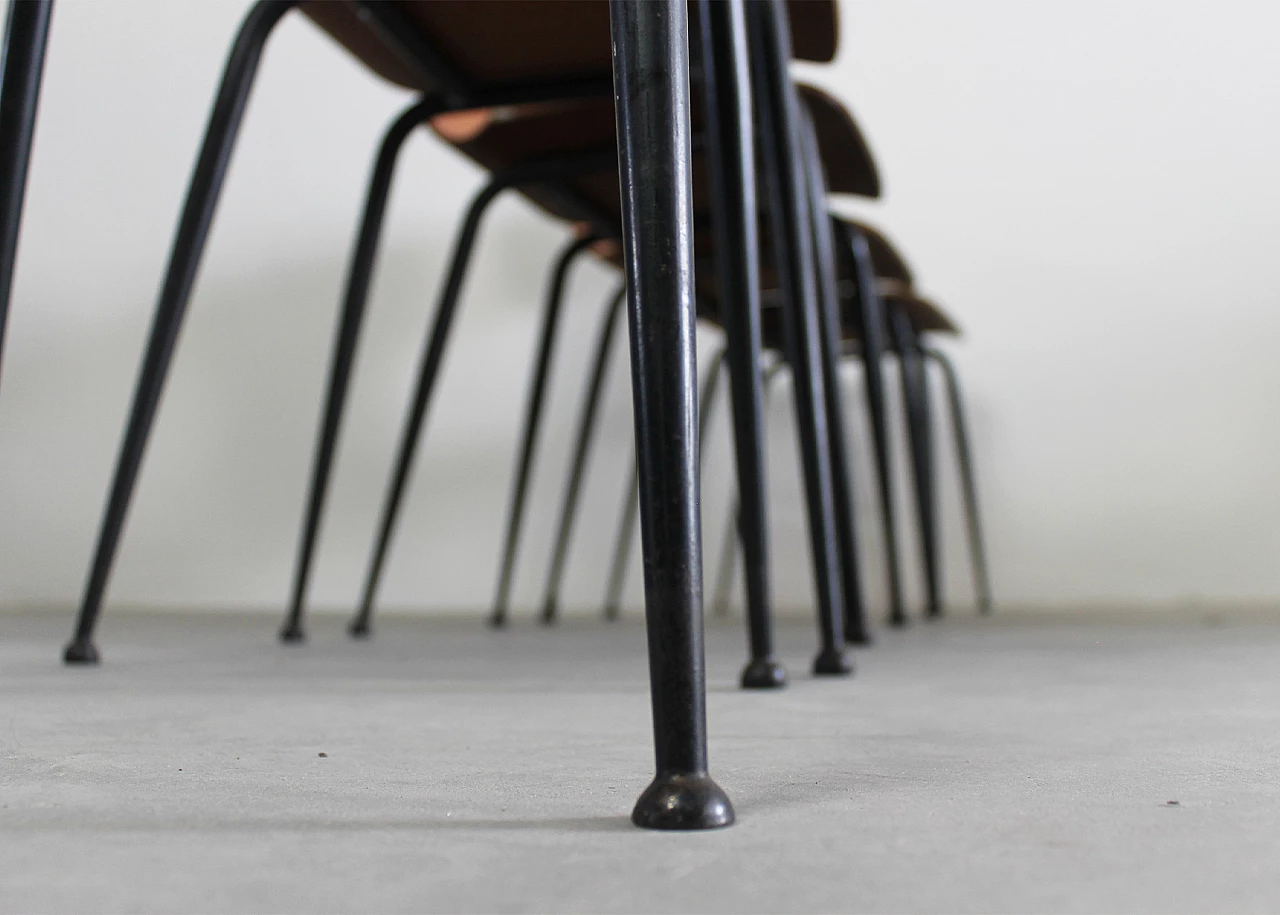
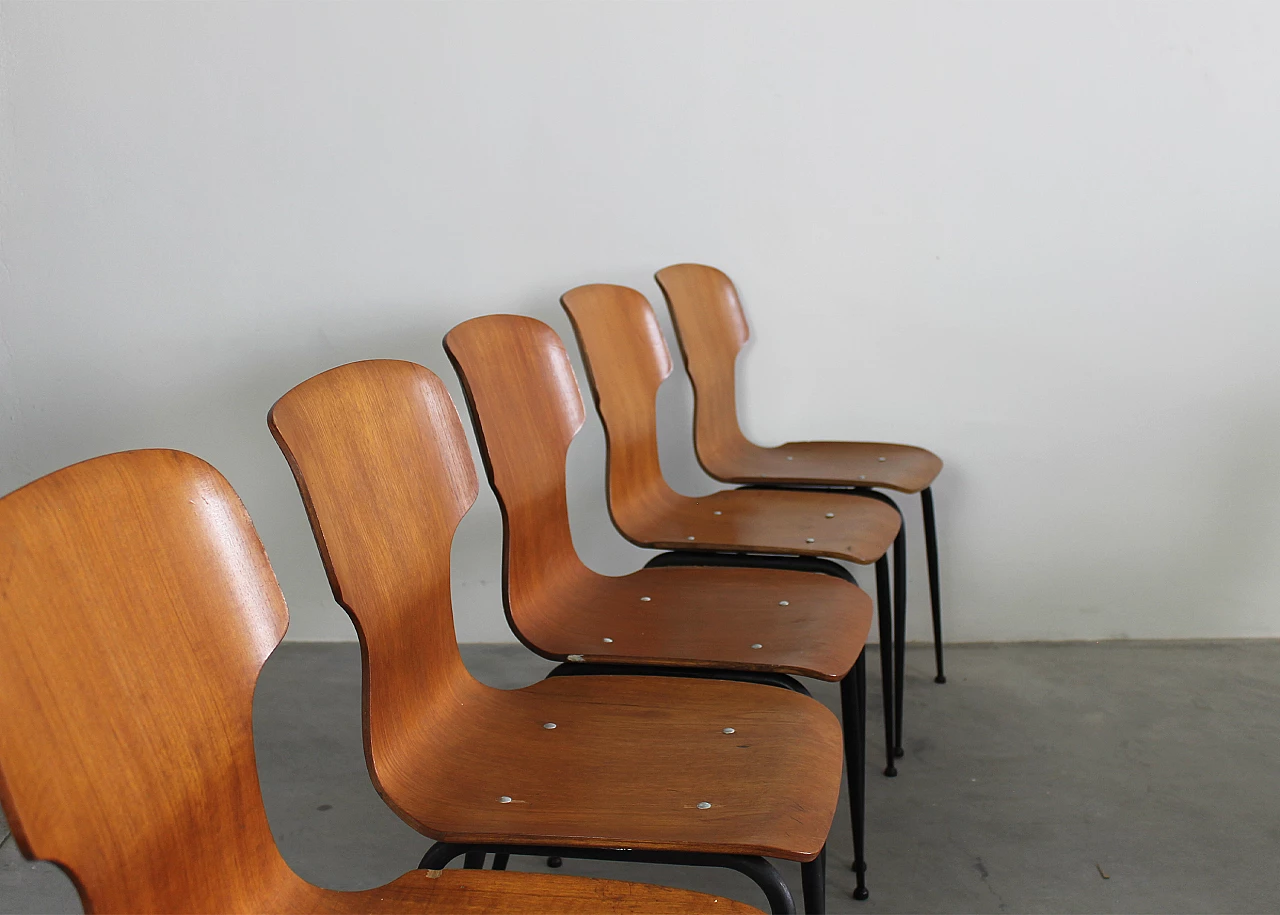
 SILVER Seller in Pistoia, Italy
SILVER Seller in Pistoia, Italy






.png)





